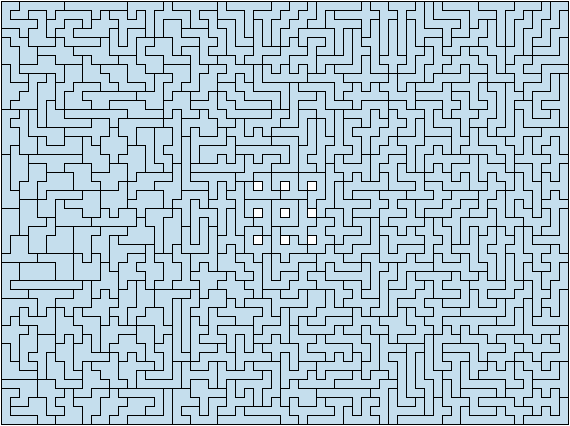First here's an interesting coincidence. The total areas covered by the hexominoes and heptominoes are 210 and 756 respectively. In both cases these numbers can be written in the form n² − n where n is a triangular number (15 and 28). This can be illustrated as in the image below:
Sadly the areas of the other polyomino sets don't continue the pattern - the trominoes get closest: they have area 6 = 3² − 3 with 3 a triangular number, but a 3x3 square isn't big enough to hold three internal holes.
Secondly here's a construction with the heptominoes that I did a few days ago as a means of easing myself back into the whole solving lark. Like all skills it works like a muscle, don't use it for a few months and it's really difficult when you get back into it.
Solved top rectangle to bottom, right to left for the first one then left to right for the second and third. And I relearnt the importance of piece ordering, i.e. using the really difficult pieces up as soon as you possibly can. Because I'd accidentally held onto the 'F' and square bracket shaped pieces in the bottom right for way too long, and they made finishing that last corner really really difficult.
Finally, here's another heptomino thing. The idea/design was a challenge posed by Livio Zucca on the Puzzle Fun Facebook group, and the solve was not easy. So not easy, in fact, that I had to resort to FlayPoly2 to place the last 10 or so pieces. The four little green rectangles took up a lot of nice corner pieces for a start, and then those four 3xn limbs on the blue and yellow sections that reach towards the centre were massively restrictive too in terms of which pieces would actually fit there.
So if you already read the Puzzle Fun group religiously then 2/3 of this blog post will have been old news by now. And the other 1/3 isn't particularly interesting news either.
Oh, and here's an octomino rectangle that I solved about a year ago then never bothered to post anywhere as far as I know. Forty-seven by sixty-three.













